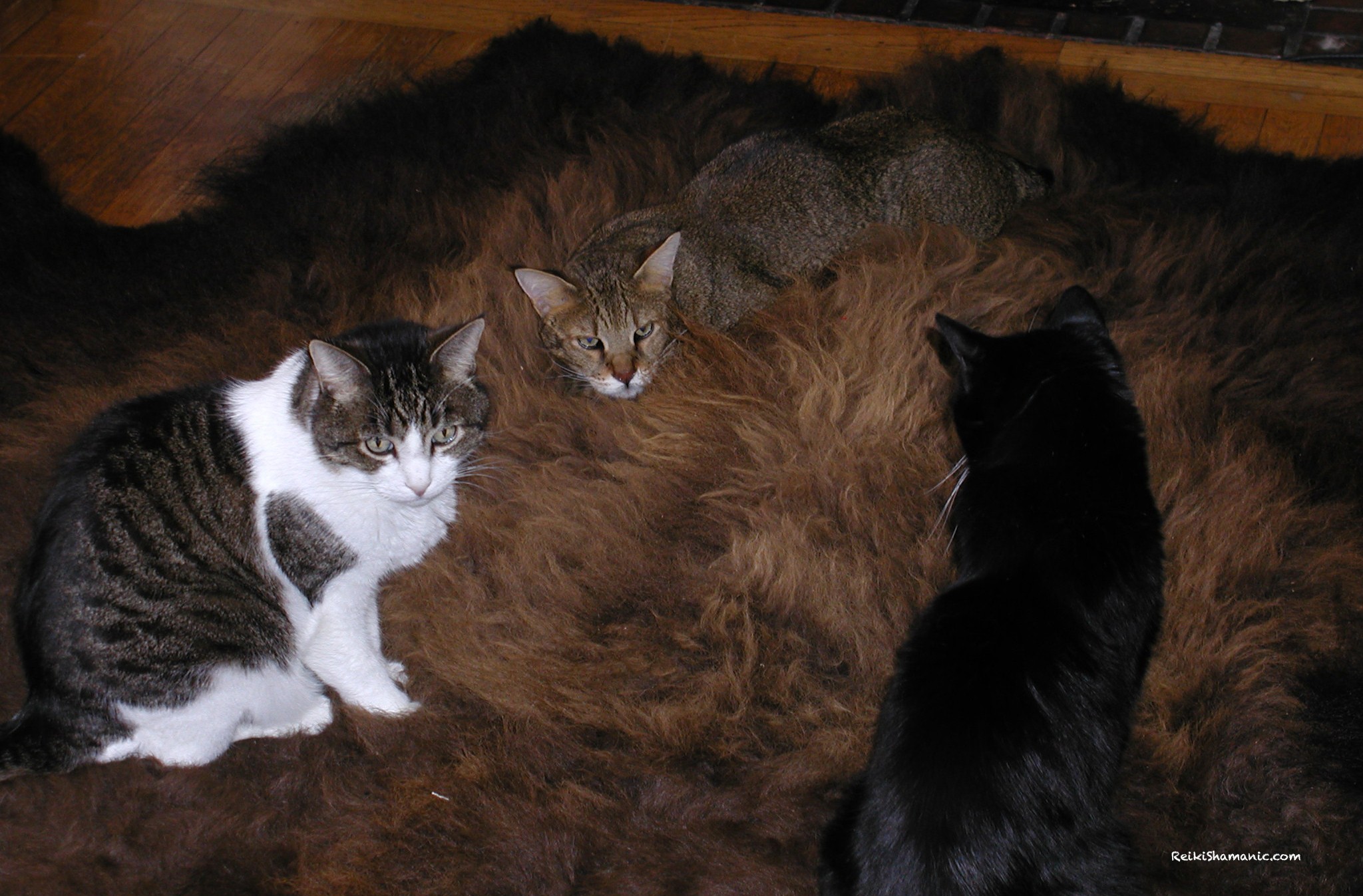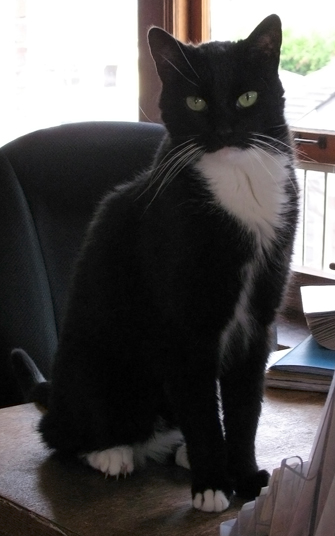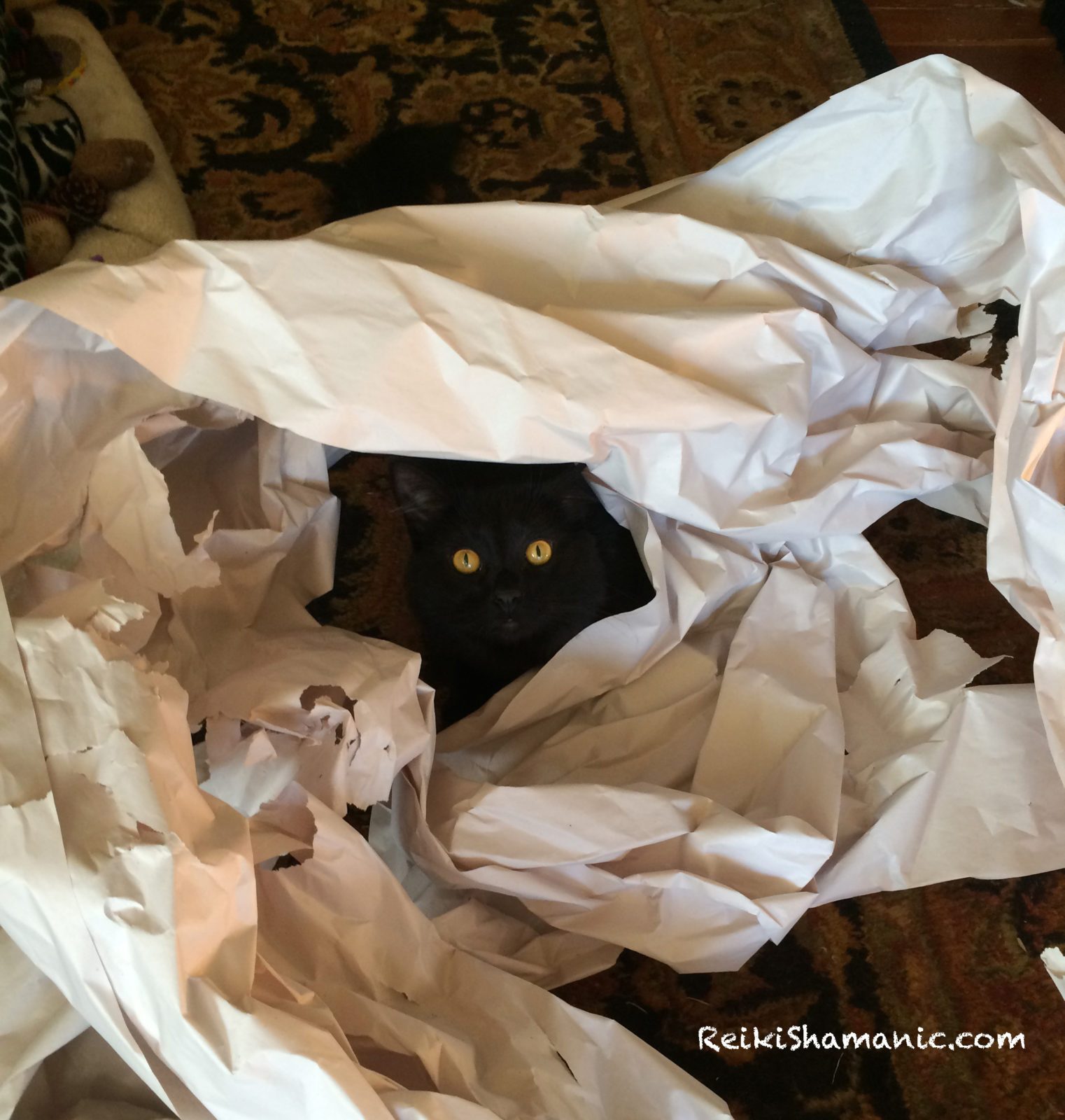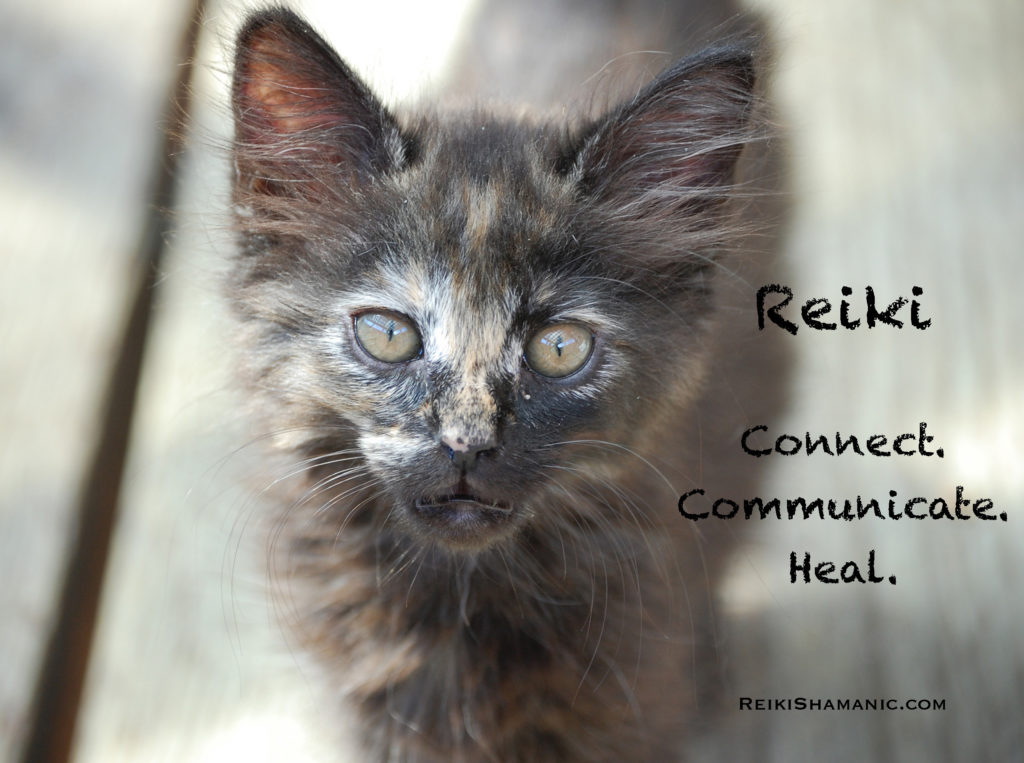
Why Feeding Natural Foods to Your Dog or Cat Is Best
For years, I fed my companion animals what I thought was a good diet. Neither expensive and “boutique” nor bargain basement “supermarket.” A good middle-of-the-road compromise (or so I thought).
I resisted any efforts or education to examine higher-quality foods or raw food diets, which I thought were excessive, costly, and time-consuming. And one of my cats paid the price for that decision. Shaman threw up every day after eating. He had never really done well from the time I brought him home as a little black and white kitten—he was always very slender and almost frail-looking. I thought it was his breeding (part Siamese), or just a weak stomach. Boy, was I wrong.
When I moved from the East coast to Seattle I was no longer able to obtain the same brand of food I had been feeding, and was forced to consider other options. I changed the diets of all my animals and was stunned by the results for everyone.

Shaman at 15 years young.
Shaman immediately stopped throwing up, and within a month all of my animals’ coats (dog and cats) became silky and glossy. And Shaman finally filled out to average rather than skeletal. All because I changed their food. It was that dramatic and that simple.
Is your dog or cat’s fur dry or dull looking?
Do they have dandruff?
Need to be bathed frequently?
Does your cat or dog scratch constantly? Groom excessively?
Have they created “hot spots” (open wounds) from licking?
Does an area of their body feel hot to the touch?
Are they hyperactive or have difficulty relaxing?
Do they have seizures?
Do they exhibit strange behaviors, such as eating dirt or ingestion of foreign objects?
Are they obsessed with food?
Will they only eat one brand of food?
If the answer to any one of these is “yes,” you need to consider changing their diet because chances are food may be the issue. Even if they are not exhibiting any of the above you should still read up on pet foods because what you learn could not only lengthen the lifespan of your companion, but lower your vet bills and give your pet a brand new healthy look (and greater joy at mealtimes!).
If you buy your food at the supermarket, discount outlet, or even your vet (most vets receive no training on nutrition in school, and base their food recommendations on the reps of the pet food companies) there is a good chance that you are not giving your loved companion a diet that will help them stay physically healthy and emotionally balanced. The reality and bottom line are that not all pet foods are created even remotely equal. It is true that you get what you pay for. Think about it: how can a food contain plump, juicy chicken and prime cuts of beef and still cost only $4 for a 5 lb. bag? Our companions are carnivores and there is no way that you can buy a prime cut of meat for less than $1 a pound.
So, what else is in a bag of dog or cat food that makes up the rest of that weight? Fillers. Wheat, soy, corn, peanut hulls, and possibly even the sweepings off of the factory floor. Little of which would ever be in your pet’s diet in the wild. Think wholesome and natural and choose accordingly. Think, “What do wolves eat? Cougars?” Does either of these animals eat grains? No. Many companion animals who exhibit itchy, scratchy behaviors have allergies to ingredients they would not normally encounter in nature. Our dogs and cats do best on diets that use high-quality animal sources for protein, not plants.
Then there are the additives and chemical preservatives, some of which can be addictive, resulting in the animal desiring only that one food brand—other agents, such as BHA, BHT, and ethoxyquin, are potential carcinogens.
Now for the stunner, unlike human food, there are no regulations governing where the protein sources in your pet’s food come from. This means that the meat in your food can come from downer animals (which can have any number of health problems) and that may have been euthanized by lethal injection. Those drugs are NOT destroyed during the processing and hence go directly into your pet’s body. It also means that all the leftover parts that we don’t eat, such as hooves, feathers, beaks, horn, etc. can legally be added to your pet’s food, and are included in the label under “Chicken By-Products, Poultry By-Product Meal, or Meat and Bone Meal.” There’s nothing wrong with these animal parts, they just do not constitute a good, high-quality protein source. The manufacturers are required to gauge the percentage of protein in the food, but are not required to disclose or consider the protein sources.
A little-known fact is that three of the five major pet food companies in the U.S. are subsidiaries of major multinational companies, for example, Nestle (Alpo, Fancy Feast, Friskies, Mighty Dog, and Ralston Purina products such as Dog Chow, ProPlan, and Purina One). What this means is that multinational companies that create human food products have a secondary market for all of their waste products; those by-products that are deemed not fit for human consumption.
What can you do? Research on the internet is a very good place to begin. I refer my clients to article What You Need to Know About Your Pet’s Food written by a Seattle area holistic veterinarian I respect.
Seek out natural pet food stores and ask questions. Most of the time the staff are quite well educated as to what is in the food they sell and which one might best fit your dog or cat’s individual needs. Consider raw or freeze-dried raw natural food diets, and/or canned food rather than highly processed dry food (kibble). If cost is a factor (as it can be with multiple animals), feed 50/50 canned food and a high-quality dry food diet. There are many excellent options to fit your lifestyle and comfort zone.
If you are changing over to a new food what you are looking for is one that contains human-grade quality ingredients. The main protein (whole chicken for example) should be listed first on the label. Also, note that while higher quality food will cost more per pound than a lesser quality food you will actually have to feed less of the quality food because it contains more nutrition per pound.
If you do decide to change your animal’s food do so gradually, say over the course of a week. Add more and more of the new food and less of the old. Because of the addictive nature of some foods, your companion may resist the change at first and will undergo a gradual detoxification process which is what happened with my own dog Puma when I first adopted him. He had been used to a very cheap, poor-quality “supermarket” brand and would not eat the higher quality food at first. Be persistent, your companion will not allow themselves to starve to death no matter how much they may dramatize! Please note that not every food, no matter how high the quality, is right for every animal. Some do better on one food than another. If diarrhea results from the changeover, it may be due to the detoxification process or your companion may do better on another food with a different protein source—buffalo, rabbit, pork, lamb, turkey, salmon, etc.
Below are some quality canned pet foods, based on what I feed my animals. Many of the companies also offer kibble varieties as well as freeze-dried raw.
• Almo Nature
• Applaws
• Avoderm
• Blue Wilderness
• By Nature
• Evanger’s
• Farmina N&D
• Feline Natural
• First Mate
• Fromm
• Go!
• Gourmet Carnivore
• Hound and Gatos
• Identity
• Kasik
• KOHA
• Lotus
• Mauri
• Nature’s Variety
• Newman’s Own Organics
• Nulo
• NutriSource
• Osopure
• PuraVita
• Rawz
• Solid Gold
• Stella & Chewy’s
• Taste of the Wild
• Tiki
• Vital Essentials
• Wellness
• Weruva
• Ziwi Peak
(Addition: please note that due to the possibility of pet food recalls it would be wise to check out sites such as Truth About Pet Food for the latest information.)
Two last tips:
1) Don’t feed the same brand or protein all the time. Personally, I rotate brands and proteins daily for my animal companions for greater enrichment and variety. No matter how good the food, no one manufacturer can equal Nature.
2) Don’t feed too much fish or chicken. Due to the heavy metals in our oceans too much fish is not a good thing, and too much chicken is the number one cause of allergens in pets.
So, let what you feed your animal be the first line of defense in helping your companion lead a long and happy life. You’ll be amazed at the difference and they’ll love you for it.
>>>>>>
Learn how to connect more deeply with animals, restore balance to your life, increase intuitive skills, and help heal the Earth with live Reiki and shamanic live home study classes, available worldwide.
>>>>>>
SHARE THIS ARTICLE
You are welcome to share this article with others by email, on your blog or to your mailing list so long as you leave it intact and do not alter it in any way. All links must remain in the article. And, you must include the copyright notice and the bio.
Originally published 2004, latest update 2021. ©Rose De Dan. All Rights Reserved. www.reikishamanic.com
A WILD WAY TO HEAL
Rose De Dan, Wild Reiki and Shamanic Healing LLC, is an animal communicator, Reiki Master Teacher, shamanic energy healer, and author. Her classes, sessions and ceremonial work are inspired by wild and domestic animals who have issued a call to action for personal and global healing.





[…] for my clients as well as for my own animals. A quality diet means more quality years together (see After the Pet Food Recall: why natural is the way to go). The growth in demand for foods with healthy ingredients (human grade quality, organic, […]